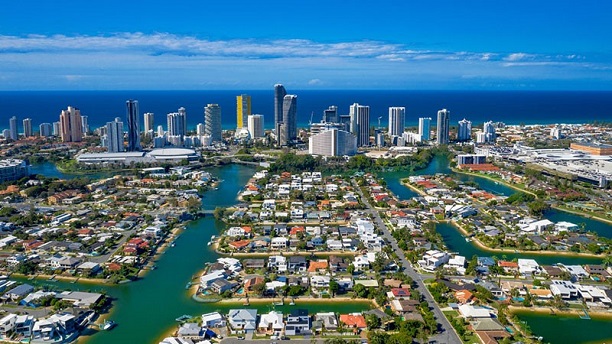Regional economies are continuing to strengthen their appeal, with the Gold Coast topping the list, as new analysis of Australian Bureau of Statistics data identifies the locations where populations across Australia are moving.
An increasing number of Australian residents preference satellite cities, known as tier-two cities on the outer-fringe of capital cities, and major regional cities, classed as tier-three cities, property market research firm Propertyology said.
The Gold Coast, located in south east Queensland is number one on the popularity list.
“The population of regional Australia increased by a further 89,132, to sit at a significant 8,424,137 as at 30 June 2018,” Propertyology head of research Simon Pressley said.
“More and more people are re-evaluating their need to remain in a capital city.”
The Gold Coast, which has a median house price that’s 60 per cent the cost of Sydney’s, attracted 7,441 new residents from other parts of Australia last year.
Pressley says Queensland’s interstate migration has continued its run with 28,668 adding to the state’s population growth for the year to June last year.
“One of the most obvious trends in the analysis was the migration of so many people away from capital cities to regional areas,” Pressley said.
Up to 6,370 Australians relocated to the Sunshine Coast last year, this number more than the 4,266 Australians who relocated to Melbourne.
The data shows Queensland, Hobart and parts of regional Victoria and New South Wales were popular locations of choice for Australian residents.
Related: The Suburbs Cheaper To Buy Property Than Rent
The Gold Coast, south of Brisbane on Australia’s east coast.
Interstate vs overseas migration
Of Australia’s total population increase of 391,000 people during the year ending June 2018, overseas migration made the largest contribution (237,225 or 61 per cent).
Although Pressley says looking at just population growth as a lead indicator of property price pressure is “far too simplistic”.
“At the end of the day, buyer behaviour and not population growth is what determines fluctuations in real estate prices.
“Buyer behaviour is determined by where people want to live, what they can afford to buy, lifestyle preferences, where they can get suitable employment, and individual stages of their life.
“Other factors include local confidence, buyer incentives, and the pursuit of financial independence.”
Propertyology
In Victoria, the findings reveal locations Bendigo, Ballarat, Geelong, Baw Baw, Mitchell, Wodonga and Wangaratta were a popular choice.
While Melbourne had a small net gain from internal migration, Pressley says the data shows 21 out of 27 Melbourne city councils produced a net population loss from internal migration.
“Within Melbourne, once again housing affordability is a common denominator in the likes of Casey, Melton, Hume and Cardinia,” he said.
“Interestingly, their respective property markets also performed significantly better than Greater Melbourne’s 10 per cent decline in 2018.”
Internal migration data suggests the number of existing residents relocating away from Sydney reached an all-time high of 27,434, Pressley says.
“In New South Wales, regional areas such as Cessnock, Maitland, Shellharbour, Dubbo, Tweed, Wingecarribee, and Ballina welcomed healthy numbers of new residents.”
News Article Courtesty of The Urban Developer

